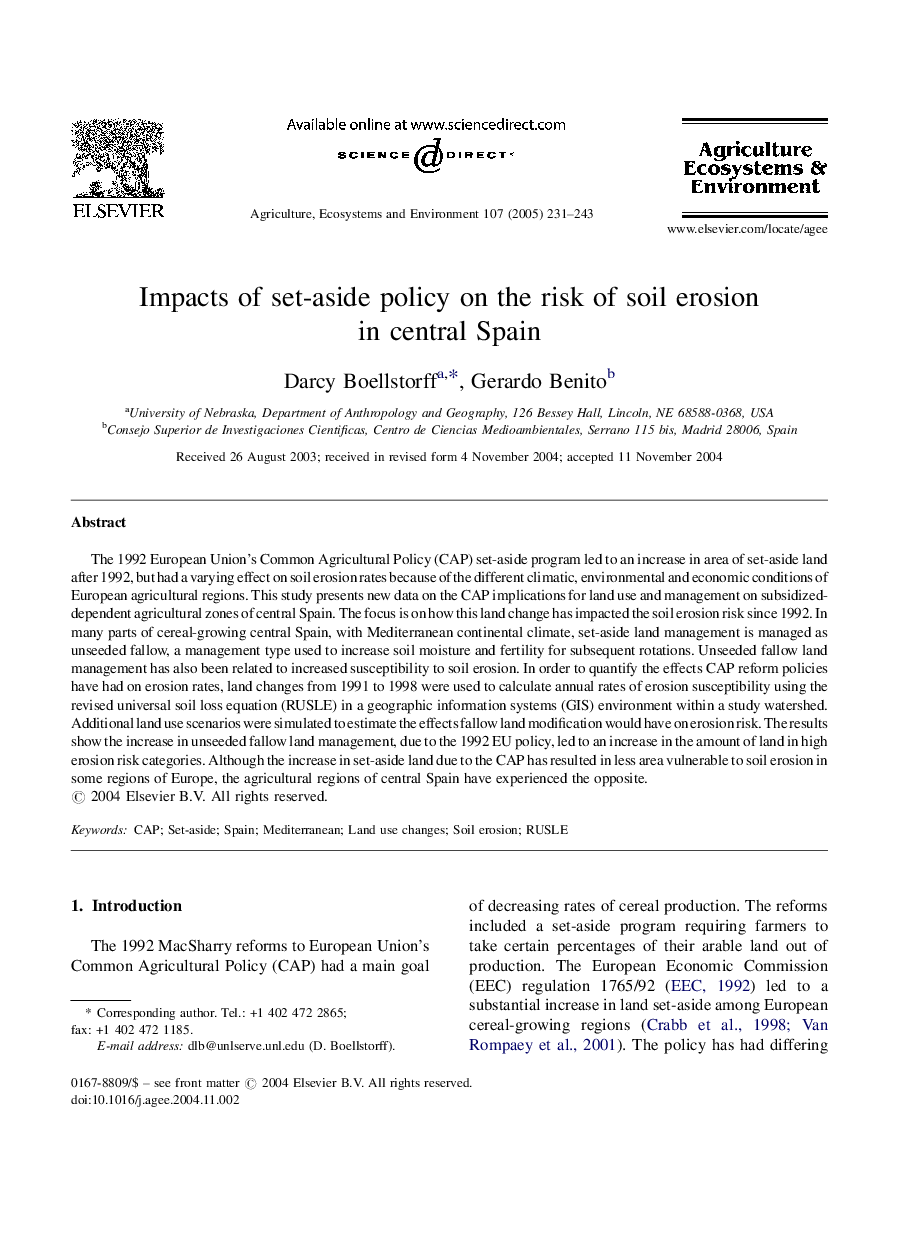| Article ID | Journal | Published Year | Pages | File Type |
|---|---|---|---|---|
| 8970797 | Agriculture, Ecosystems & Environment | 2005 | 13 Pages |
Abstract
The 1992 European Union's Common Agricultural Policy (CAP) set-aside program led to an increase in area of set-aside land after 1992, but had a varying effect on soil erosion rates because of the different climatic, environmental and economic conditions of European agricultural regions. This study presents new data on the CAP implications for land use and management on subsidized-dependent agricultural zones of central Spain. The focus is on how this land change has impacted the soil erosion risk since 1992. In many parts of cereal-growing central Spain, with Mediterranean continental climate, set-aside land management is managed as unseeded fallow, a management type used to increase soil moisture and fertility for subsequent rotations. Unseeded fallow land management has also been related to increased susceptibility to soil erosion. In order to quantify the effects CAP reform policies have had on erosion rates, land changes from 1991 to 1998 were used to calculate annual rates of erosion susceptibility using the revised universal soil loss equation (RUSLE) in a geographic information systems (GIS) environment within a study watershed. Additional land use scenarios were simulated to estimate the effects fallow land modification would have on erosion risk. The results show the increase in unseeded fallow land management, due to the 1992 EU policy, led to an increase in the amount of land in high erosion risk categories. Although the increase in set-aside land due to the CAP has resulted in less area vulnerable to soil erosion in some regions of Europe, the agricultural regions of central Spain have experienced the opposite.
Related Topics
Life Sciences
Agricultural and Biological Sciences
Agronomy and Crop Science
Authors
Darcy Boellstorff, Gerardo Benito,
